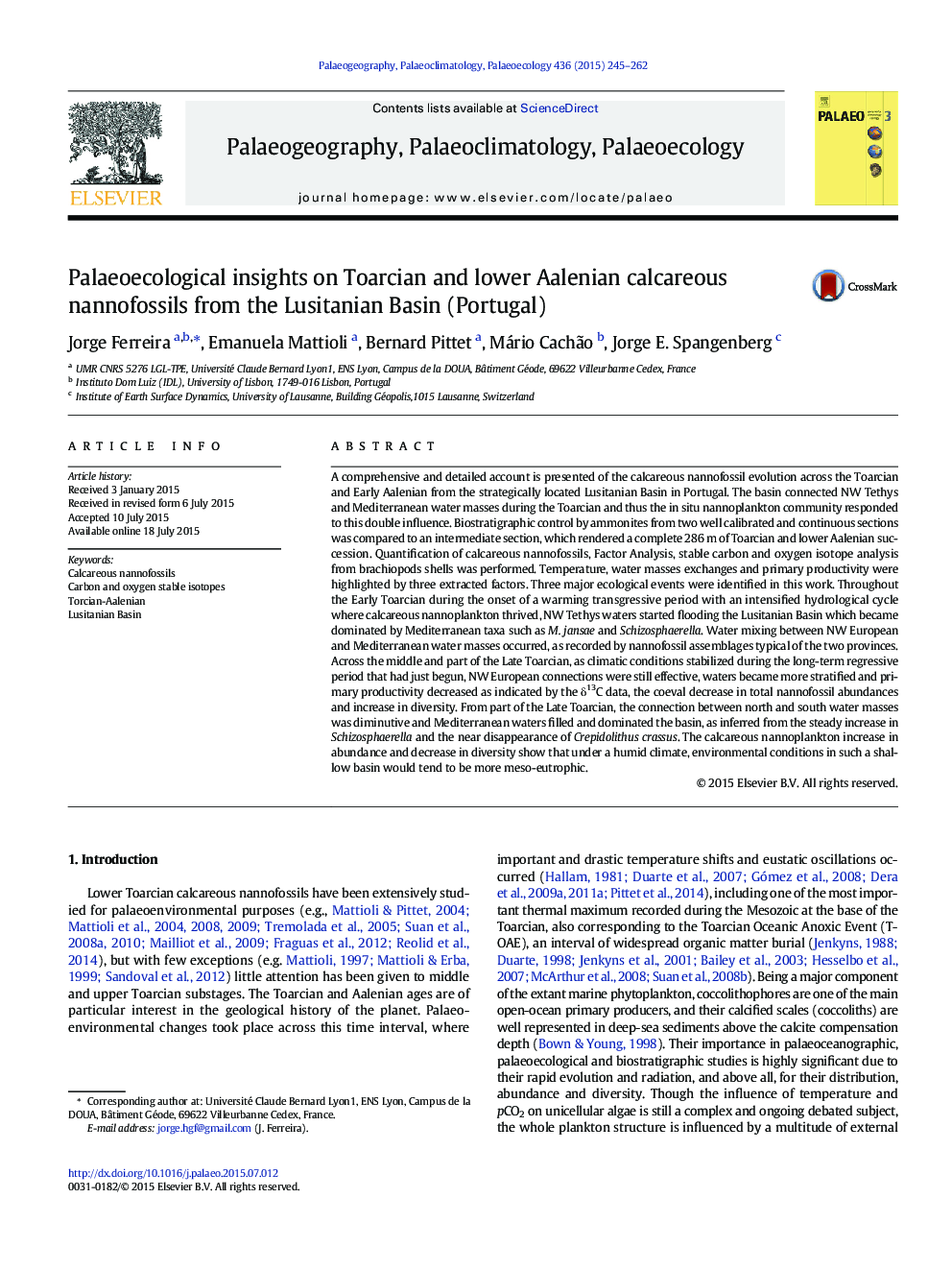| کد مقاله | کد نشریه | سال انتشار | مقاله انگلیسی | نسخه تمام متن |
|---|---|---|---|---|
| 4465909 | 1622154 | 2015 | 18 صفحه PDF | دانلود رایگان |
• Three long-term environmental settings are acknowledge;
• N-S water masses connection was lost in the Upper Toarcian;
• Carinolithus superbus is interpreted as a specialist species;
• Stable environment seems to have triggered Lotharingius genus replacement.
A comprehensive and detailed account is presented of the calcareous nannofossil evolution across the Toarcian and Early Aalenian from the strategically located Lusitanian Basin in Portugal. The basin connected NW Tethys and Mediterranean water masses during the Toarcian and thus the in situ nannoplankton community responded to this double influence. Biostratigraphic control by ammonites from two well calibrated and continuous sections was compared to an intermediate section, which rendered a complete 286 m of Toarcian and lower Aalenian succession. Quantification of calcareous nannofossils, Factor Analysis, stable carbon and oxygen isotope analysis from brachiopods shells was performed. Temperature, water masses exchanges and primary productivity were highlighted by three extracted factors. Three major ecological events were identified in this work. Throughout the Early Toarcian during the onset of a warming transgressive period with an intensified hydrological cycle where calcareous nannoplankton thrived, NW Tethys waters started flooding the Lusitanian Basin which became dominated by Mediterranean taxa such as M. jansae and Schizosphaerella. Water mixing between NW European and Mediterranean water masses occurred, as recorded by nannofossil assemblages typical of the two provinces. Across the middle and part of the Late Toarcian, as climatic conditions stabilized during the long-term regressive period that had just begun, NW European connections were still effective, waters became more stratified and primary productivity decreased as indicated by the δ13C data, the coeval decrease in total nannofossil abundances and increase in diversity. From part of the Late Toarcian, the connection between north and south water masses was diminutive and Mediterranean waters filled and dominated the basin, as inferred from the steady increase in Schizosphaerella and the near disappearance of Crepidolithus crassus. The calcareous nannoplankton increase in abundance and decrease in diversity show that under a humid climate, environmental conditions in such a shallow basin would tend to be more meso-eutrophic.
Journal: Palaeogeography, Palaeoclimatology, Palaeoecology - Volume 436, 15 October 2015, Pages 245–262
